Licking County Agriculture
Introduction
Text-to-speech Audio
Images
These tools, including the corn sheller, lard press, sausage grinder, and plow were used on farms in Licking County.
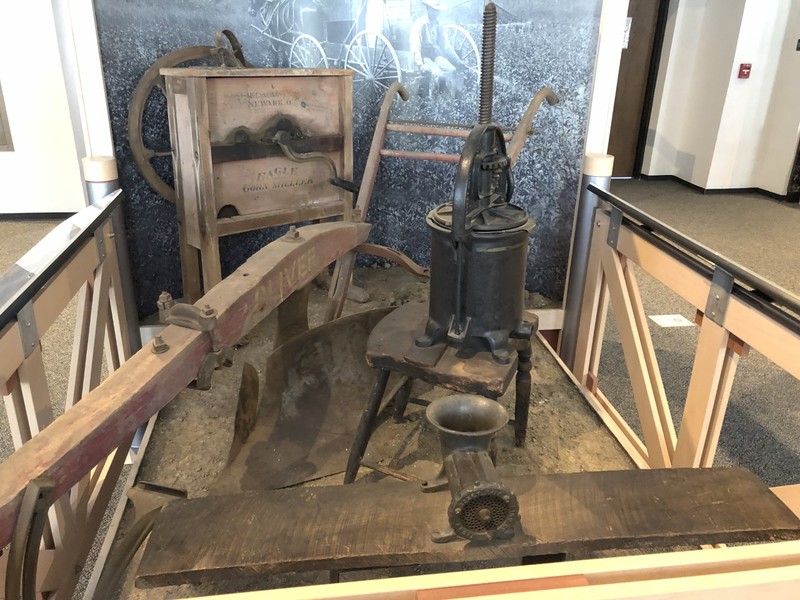
The lard press was attached to the seat of a chair to give it a permanent base.
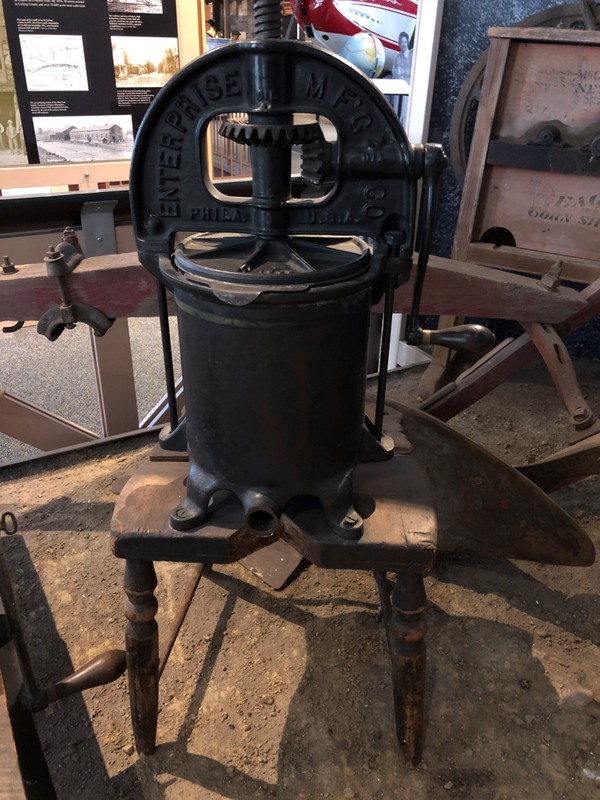
A meat grinder like this one would have been a necessary item for farming families wishing to process some of their meat into sausage.
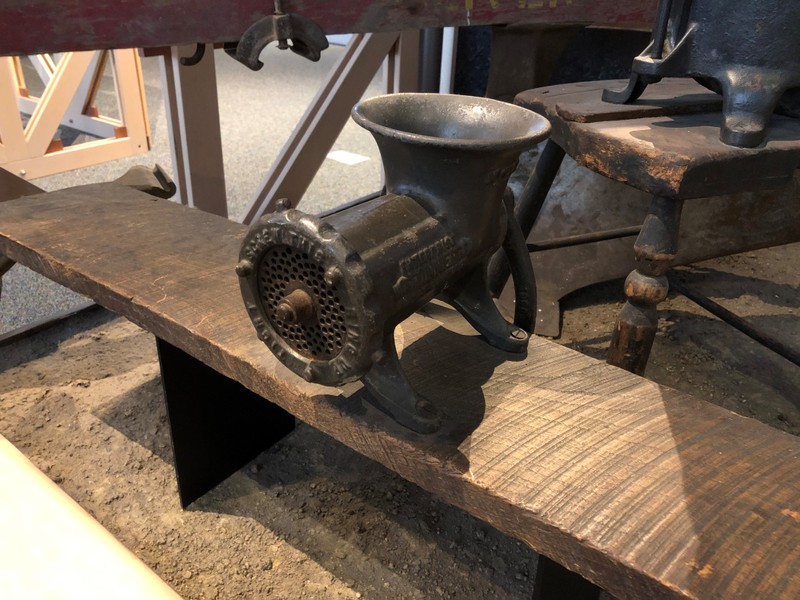
The corn sheller was sold by McCune & Owens in Newark.
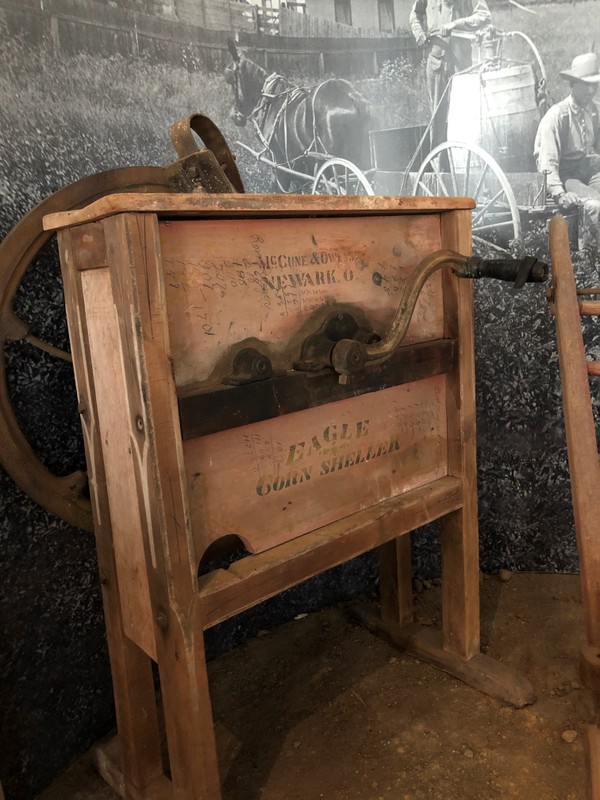
As you can see from this 1870 map of Newark, much of what is now part of the city was once open farmland. Much of the city's economy was associated with agriculture.
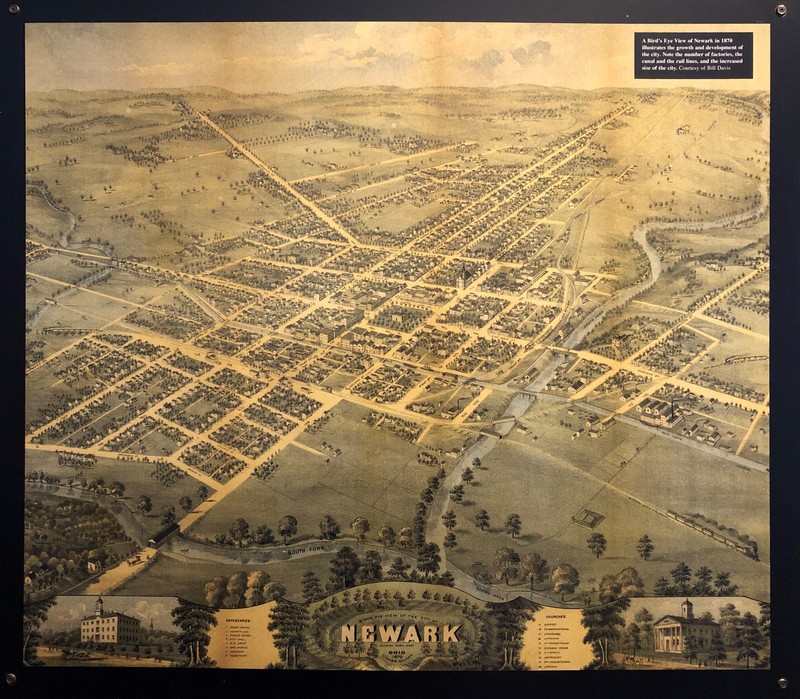
Backstory and Context
Text-to-speech Audio
During the second half of the 1800's, Licking County was consistently among the top ten Ohio counties in agricultural production. As farmers sought profits, they benefited from increased market access via the railroad and also from local firms that provided tools and supplies to fulfill their needs. For example, in 1853, N.C. Pepper opened the Newark Agricultural Warehouse and Seed Store, which supplied plows, planters, cutters, various mills, and hand tools to local farmers.
By 1870, Licking County farmers owned 2,692 farms with 278,611 improved acres and accounted for $3,500,000 worth of products per year. The county led the state in the amount of wool produced (over one million pounds), and ranked high in yields of corn, wheat, and oats. By 1887, over 174,600 sheep were in the county, ranking Licking County first in Ohio, and almost 150,000 acres of pasture lands existed. A steady rate of growth continued until near the end of the 1800's.
On display in the museum are several tools from our agricultural past. Items like the Oliver plow, show the types of small tools used on a Licking County farm. The corn sheller was sold by McCune & Owens, a Newark merchandiser.
Not only were many families farming and growing food, but it was necessary to process many foods for home use. A few examples of tools to do this are also on display. The lard press and sausage stuffer are examples of these types of tools, both from Licking County farms. Interestingly, the lard press is attached to the seat of a chair, making it more secure and easier to use.
